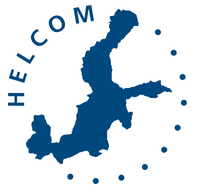and (CLIA) have launched a joint information gathering on sewage delivery in the Baltic Sea Region in advance of the 2014 summer season. The survey aims to collect detailed data on sewage delivery needs and available facilities, based on each visit. The two main sources of such information are cruise ships and ports visited by such ships. The survey is connected to the 2011 International Maritime Organization’s (IMO) designation of the Baltic Sea as a “special area” for passenger ships in terms of MARPOL Annex IV (on sewage from ships) based on a proposal from the region. Less untreated sewage released to the sea would help reduce harmful nutrients polluting the Baltic Sea environment. In the new survey the participating cruise ships are invited to fill in their experiences with port reception facilities (PRF), as well as their own sewage delivery needs, when visiting ports in the Baltic Sea region. Ports are encouraged to provide their observations on the use of their sewage PRFs to supplement the information provided by the cruise industry. According to the IMO decision on sewage from passenger ships, the coastal countries of the Baltic Sea, convening within HELCOM, shall report to IMO’s Marine Environment Protection Committee (MEPC) once the sewage reception facilities in the Baltic Sea ports fulfill the criteria of adequacy, before the “special area” regulations will take effect on 1.1.2016, at the earliest. In order to assist the process, HELCOM has compiled information on the current status of sewage PRFs and the level of cruise traffic, as well as facilitated dialogue in the region between the different actors involved since 2010. Based on information received from ports and national administrations during last year, HELCOM developed the publication “2013 HELCOM overview of port reception facilities for sewage in the Baltic Sea area and related trends in passenger traffic” which was recently . The ship-specific results of the survey now launched will be used to further develop and update the 2013 overview during the autumn of 2014. * * *Note for editors:National maritime administrations, industry and the civil society cooperate closely within to find joint solutions for cleaner Baltic Sea shipping. During the last decade shipping has steadily increased in the Baltic Sea, reflecting intensifying co-operation and economic prosperity around the region. At the same time, increasing maritime transportation threatens fragile ecosystems and the livelihoods of the many people who depend on the sea. More than 2,000 ships are at sea each day and the amount is predicted to keep growing. Between 2006 and 2010, the number of ships entering or leaving the Baltic Sea via Skaw increased by more than 10%. Passenger ships comprise approximately 11% of the total ship traffic in the Baltic Sea. Some 91 million passengers in international traffic passed through over 50 Baltic Sea ports in 2008. The Baltic Marine Environment Protection Commission, usually referred to as , is an intergovernmental organization of the nine Baltic Sea coastal countries and the European Union working to protect the marine environment of the Baltic Sea from all sources of pollution and to ensure safety of navigation in the region. Since 1974, HELCOM has been the governing body of the ‘Convention on the Protection of the Marine Environment of the Baltic Sea Area’, more commonly known as the Helsinki Convention. * * * For further information, please contact:Hermanni Backer Professional Secretary for Maritime, Response and Maritime Spatial Planning HELCOM Tel: +358 46 8509199 Skype: helcom02 E-mail: hermanni.backer(at)helcom.fi Johanna Laurila Information Secretary HELCOM Tel: +358 40 523 8988 Skype: helcom70 E-mail: johanna.laurila(at)helcom.fi
The survey aims to collect detailed data on sewage delivery needs and available facilities, to pave the way for the IMO ban on sewage in the Baltic Sea.
